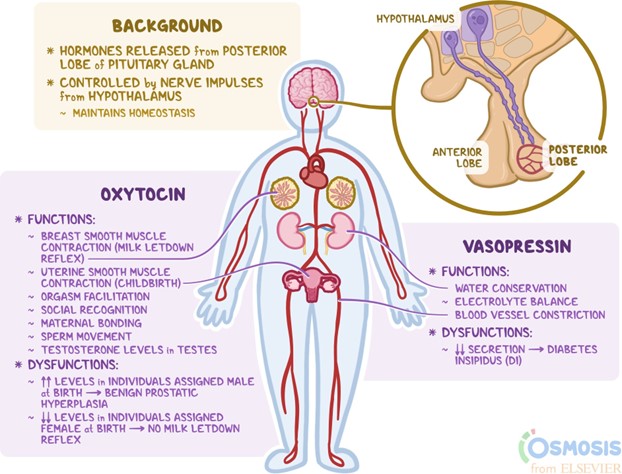Which of the following is not an example of a negative homeostatic mechanism in the human body?
Increasing heart rate and force of contraction when blood pressure falls.
Secreting insulin after a meal to return blood sugar concentration to normal.
Retention of fluid leads to retention of more fluid.
Shivering when body temperature falls below normal.
The Correct Answer is C
This is because it is an example of a positive feedback loop, which amplifies the change and moves the system away from its normal state.
A negative feedback loop is a mechanism that reverses a deviation from the set point and maintains homeostasis.
Choice A is wrong because increasing heart rate and force of contraction when blood pressure falls is a negative feedback loop that restores blood pressure to normal.
Choice B is wrong because secreting insulin after a meal to return blood sugar concentration toward normal is a negative feedback loop that regulates glucose levels.
Choice D is wrong because shivering when body temperature falls below normal is a negative feedback loop that increases heat production and raises body temperature.
Normal ranges for blood pressure are 90/60 mmHg to 120/80 mmHg, for blood glucose, are 70 mg/dL to 140 mg/dL, and for body temperature are 36.5°C to 37.5°C or 97.7°F to 99.5°F.
Nursing Test Bank
Naxlex Comprehensive Predictor Exams
Related Questions
Correct Answer is B
Explanation
Kidneys are not part of the lymphatic system.
The lymphatic system is a network of vessels and organs that drain excess fluid from the tissues, transport fats and immune cells, and protect the body from infections.
Kidneys are part of the urinary system, which filters blood, regulates fluid and electrolyte balance, and produces urine.
Choice A is wrong because kidneys do not have a direct connection to the lymphatic system.
Although kidneys have lymphatic vessels in their cortex, they do not originate from the lymphatic system.
Kidneys receive blood from the renal arteries and return it to the renal veins.
The lymphatic vessels in the kidney cortex drain interstitial fluid and immune cells from the kidney tissue to the regional lymph nodes.
Some additional sentences are:
Choice B is right because kidneys are part of the urinary system, not the lymphatic system.
The urinary system and the lymphatic system have different functions and structures in the body.
Normal ranges for kidney function tests include blood urea nitrogen (BUN) of 7 to 20 mg/dL, serum creatinine of 0.6 to 1.2 mg/dL, and glomerular filtration rate (GFR) of more than 90 mL/min/1.73 m.
Normal ranges for lymphatic system tests include white blood cell (WBC) count of 4,000 to 11,000 cells per microliter, lymphocyte count of 1,000 to 4,800 cells per microliter, and immunoglobulin levels of IgG (700 to 1,600 mg/dL), IgA (70 to 400 mg/dL), IgM (40 to 230
mg/dL), IgE (0 to 100 IU/mL), and IgD (0.5 to 5 mg/dL).
Correct Answer is B
Explanation
Hormones that the posterior pituitary secretes are synthesized in the hypothalamus.

They are made by neurons in the hypothalamus and stored and released by the posterior lobe of the pituitary gland, a small organ at the base of the brain.
They regulate water balance, blood pressure, and uterine contraction in the body.
Choice A is wrong because the anterior pituitary synthesizes its own hormones, such as growth hormone, thyroid-stimulating hormone, and prolactin.
Choice C is wrong because the thalamus is not involved in hormone synthesis or secretion. It is a part of the brain that relays sensory and motor signals to the cerebral cortex.
Choice D is wrong because the posterior pituitary does not synthesize hormones. It only stores and releases hormones made by the hypothalamus.
Whether you are a student looking to ace your exams or a practicing nurse seeking to enhance your expertise , our nursing education contents will empower you with the confidence and competence to make a difference in the lives of patients and become a respected leader in the healthcare field.
Visit Naxlex, invest in your future and unlock endless possibilities with our unparalleled nursing education contents today
Report Wrong Answer on the Current Question
Do you disagree with the answer? If yes, what is your expected answer? Explain.
Kindly be descriptive with the issue you are facing.
